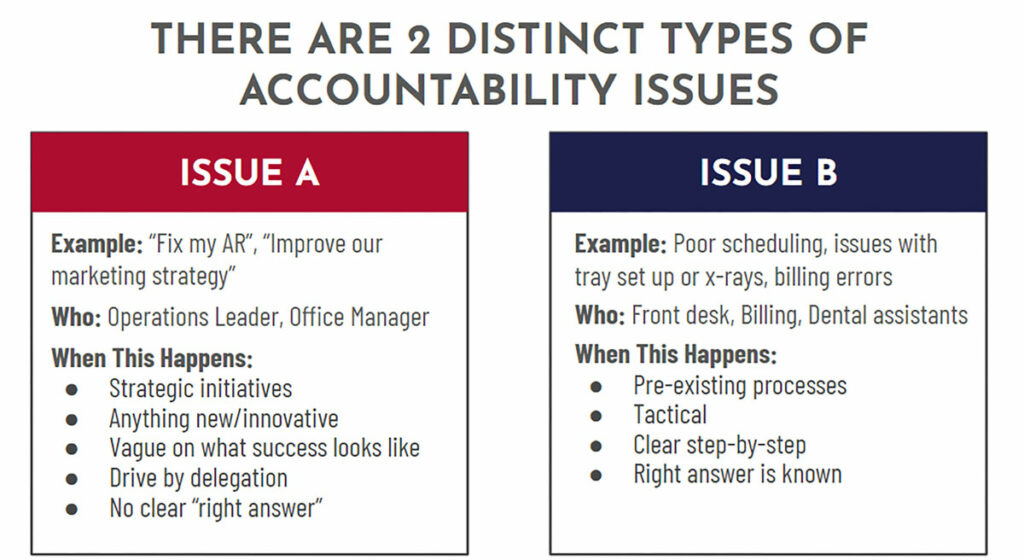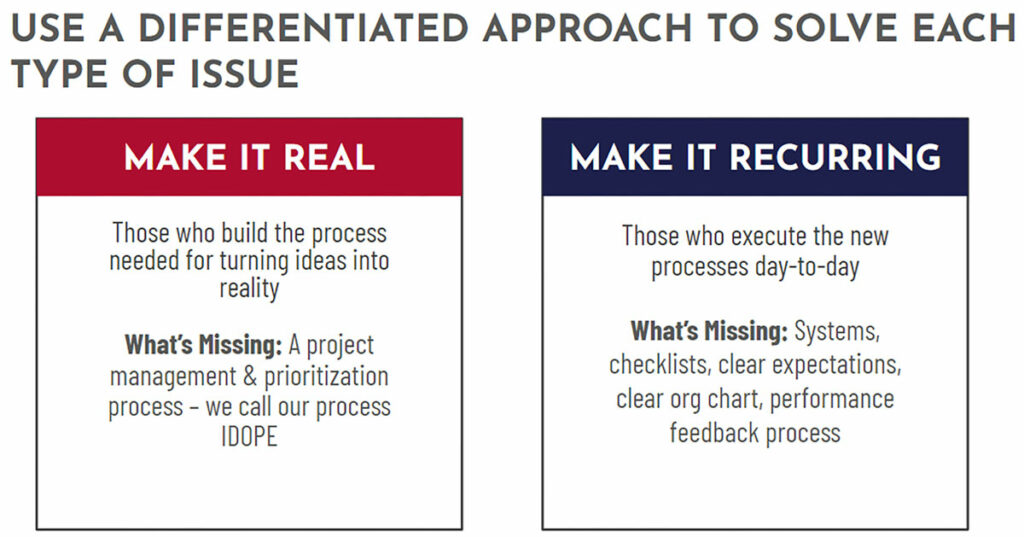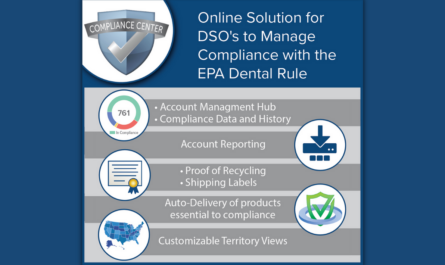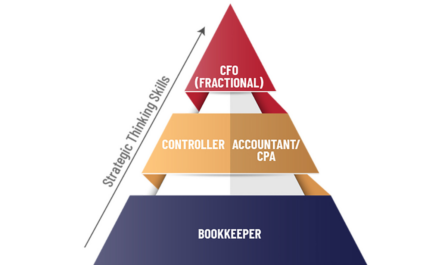How to set clear expectations for key positions in your organization.
Accountability is the kind of word that might cause severe levels of anxiety in the hearts and minds of your employees. It’s the kind of thing that’s synonymous with micromanagement and controlling personalities, despite the kind of culture and work atmosphere you’ve cultivated. Still, it’s an important part of today’s work environment.
By implementing accountability into your workflow, you can ensure that there’s transparency throughout the levels of your organization. Accountability needs to be something where we’re growing together – it shouldn’t be something where you are nervous when those who are keeping you accountable are around.
How well does your organization do at holding your team members accountable? The DEO has systems and processes that are designed to help you set clear expectations for the key positions in your organization to catch issues early on.

The stigma of accountability
There’s a stigma attached to the idea of accountability that can make it more challenging to develop the processes needed to strengthen the culture of your organization. While pushing accountability in your organization can often feel like there’s an enormous, unaddressed elephant in the room, it’s truly meant to create a more trusting and open environment for your team members.
For leadership, pushing accountability can feel like the beginning of a turf war. While it’s designed to bring the different departments and teams together, it can sometimes feel like each group is (intentionally or not) making the other’s job harder. Leadership’s job is to ensure that each department comes together to work towards a greater good, but that’s not always easy.
When working with your team individually, you have to balance and manage the wide-ranging, dynamic emotions people feel about their work environment. From the leadership perspective, we might feel that if we say the wrong thing to the wrong person, they will leave. It can also turn into a situation where we begin to look and feel like we are micromanaging every move they make. Or, even worse, we may be unsure of how well they are performing at their job – without the data to back it up, how can we know for sure?
From the team members’ perspective, accountability needs to provide clear and actionable directives based on the feedback they are receiving from leadership. Too often, team members will feel that feedback isn’t specific enough to their experience or even how they have missed the mark. Phrases like “do better” aren’t enlightening or helpful.
Based on the culture of your organization, you might have team members who just aren’t engaged with the job. Without a healthy company culture, it can be difficult to plug in and operate at a high level. That kind of environment can also create division amongst your team, where attitudes like “that’s not my job” can run rampant across your company.
Obviously, accountability is not meant to create division or anxiety for your team members. It’s up to the leadership of our organizations to ensure that each team member can feel safe and respected while being held accountable to the mission, vision, and values of the dental practice.

A breakdown in the organization
To better implement accountability within your organization, you need to clearly understand the roles that your team members occupy. We break it down into three simple categories:
- Make It Up
- Make It Real
- Make It Recurring
Make It Up people are typically members of leadership who are setting the pace and vision for the organization. Make It Real people, or project managers and department heads, are the ones building the processes that manifest that vision and turn it into reality. Make It Recurring people, the team members, execute those processes on a day-to-day basis that makes sense for the company.
Understanding how to hold the Make It Real People and Make It Recurring people accountable requires different processes and systems – they both need each other to operate effectively. You can’t have accountability if you don’t have the responsibility of the Make It Real person to build the processes to get things done, just like you can’t have accountability with the Make It Recurring people if the Make It Real people aren’t held accountable themselves.
Where the breakdown occurs is that the Make It Real people say things like, “Why aren’t they being accountable for these responsibilities?”, when it’s their responsibility to say something like, “I trusted you to do this. This is your responsibility. I’m verifying that you got this accomplished. If not, how can we get you back on track?”
To fix this, you need to use a different approach for each person. For Make It Real people, you need a project management and prioritization process that helps you organize and strategize your approach to building out your projects. For Make It Recurring People, you need a standardized set of systems, checklists, clear expectations, a defined organization chart, and a process for performance feedback and benchmarking.
| Common things we hear from owners about accountability: • “If I say something, I’ll probably lose this person.” • “I told them twice what to do, so why aren’t they doing it?” • “I have a feeling they’re not performing well but I don’t know for sure.” • “I’m too busy to babysit them!” Common things we hear from team members on accountability: • “Their instructions were so vague, I don’t really know what they want.” • “I don’t know what metrics I’m responsible for, where to find them, or what to do if they’re off target.” • “When I mess up, I’m told to ‘do better’ but I don’t really know what I’m doing wrong.” • “I don’t really want to do this work.” • “I could do it better if the machine wasn’t always breaking down.” • “That’s so-and-so’s job, not mine.” OR “If so-and-so would do their part, I would be able to do mine better.” |
Implementing a process
The DEO has crafted a standardized process that can help your dental practice increase accountability for the execution of new ideas. This system is called IDOPE.
- Ideate – The ideas stage of IDOPE is the least complicated, as leadership is vocalizing plans and goals for the organization. At this part of the process, everything should be considered a blank slate – no bad ideas. From there, you can parcel through and select the ideas that will be feasible for your team to commit to.
- Document – Ideas only exist within the hearts and minds of leadership. If they aren’t written down anywhere, it’s harder to judge them, evaluate them, or determine their value. Use a solution like Asana, Google Sheets, Monday.com, Trello or Airtable to document everything.
- Organize – At the organization stage, you can start to set the boundaries, opportunities, and challenges of the idea. Take the time to evaluate your team and assign these ideas to the appropriate person.
- Prioritize – As you continue to organize, you will find that some ideas are not the first priority of your organization. If there are things that can wait, put them lower on your priority list. Move anything that can’t wait to the top of the priority list and continue to arrange each item according to its priority level.
- Execute – All priorities should be clear, and you should have a process for your team to act on the goals you set for your organization to accomplish them. Every active project should now have a project leader who will oversee managing tasks for the project and updating the project status
Implementing a step-by-step process like this allows you to have clarity for all your existing projects, from beginning to end. Ideas aren’t simple things, and they only get more complicated as you continue to scale your business. Making those ideas real and recurring requires a transparent process where you can keep every key member accountable at every step.





